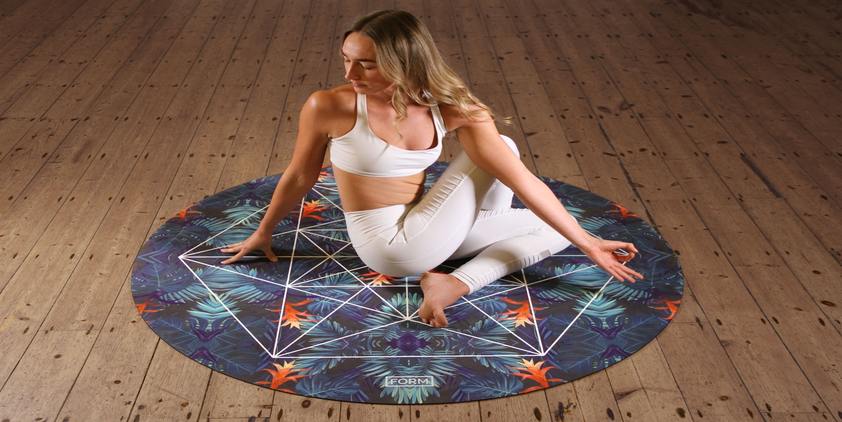

October 31, 2018 | Categories: Fitness
When you’re hunched over a desk for hours on end, you’re likely to feel tight in a number of places by the time you head home. Sure, a “desk job” isn’t considered physical labor, but tell that to your aching neck, shoulders, back, and hips.
Then after a day of typing away and staring at a screen, many of us revert to lounging on our couches, watching a TV screen, and scrolling through our phones. We’re not doing our bodies any favors.
In order to work out those desk-induced kinks and tightness, a few stretches can help you feel better at the end of the day, and set yourself up for longer, leaner muscles that don’t feel as tight. Chicago-based personal trainer, Michele Sotak, shares stretches you can do in your living room after working at a desk job.
“I recommend foam rolling because anyone can do it and it provides myofascial release which can increase your range of motion,” Sotak says. “You could do foam rolling before or after a home workout, or while you’re watching TV.
Foam rolling massages the muscles, breaks up fascia, and can help with recovery after intense exercise while helping to ease delayed onset muscle soreness (DOMS), according to research.
Remember to breathe deeply while performing all of these stretches, Sotak advises. Hold each stretch for 20 to 30 seconds, she recommends.
Your hips can get tight from sitting all day. Doing this exercise can help stretch your IT band. The IT band (iliotibial band) is connective tissue that runs along the outside of your thigh, from the pelvis to the knee. Lie on your left side, with your bottom leg placed on the foam roller that’s perpendicular to your leg, positioned between your hip and your knee. Cross the right leg in front of you and prop yourself up, putting weight on your right arm and left leg. Roll the lower leg over the foam roller up to your hip and then down to your knee, suggests Sotak. Repeat on the other side. (Here’s how to run a Ragnar Relay race…you’ll be foam rolling as often as possible!)
This foam rolling massage will feel great on your quadriceps, the muscles on the front of your thighs. Lie face-down as if you were in a forearm plank, position the foam roller perpendicular to your legs and on your mid thighs. Roll over the foam from the tops of your thighs to above the knees, suggests Sotak.
Get down on the floor or a mat, placing the foam roller underneath your spine long ways. With feet planted on the ground and knees bent, hold your arms out, bent at 90-degree angles, like a football goal post, and breathe deeply. The muscles should relax and eventually your elbows will stretch down to the floor.
“I like this over-the-body stretch for relieving shoulder pain and tightness,” says Sotak. Extend the left arm across your body. Then take your right hand and place it on the upper part of your left arm, near the triceps, pulling the left arm closer to your body and hold, suggests Sotak. Switch sides.
If you’re holding a lot of tension in your upper back area after a long day of sitting, try this foam rolling exercise. Get on the floor; positioning the foam roller perpendicular to your body, stretching long ways behind your shoulders and upper back. Place hands behind your head, lightly on your neck. With feet and butt firmly planted on the ground, knees bent, gently roll the foam from the top of your spine to your mid-back and back again to relieve tight muscles.
When you’re staring at a computer screen all day, chances are that you’ve experienced neck pain by evening hours. Try this neck stretch to release tension on both sides. Kneel on the floor with your feet tucked under you. Place fingers of your left hand lightly on top of your head, gently pulling the head to the left side. Your right arm should be down, fingers stretching to the floor. Hold for 20 to 30 seconds and then switch sides.
Read the full article on Apartment Therapy.
Leave a Reply